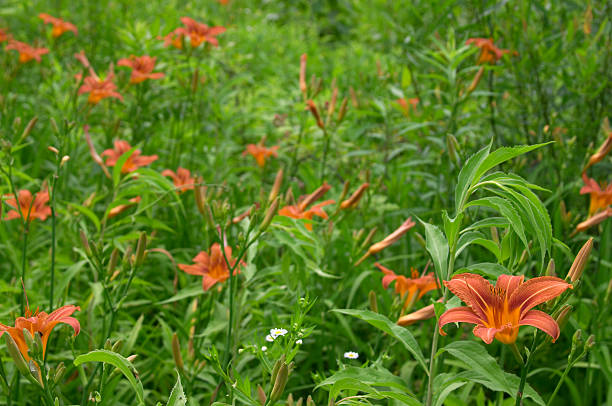How Do You Get Daylilies To Bloom
To make yourdaylilies bloom you may remove the faded flowers, divide, replant, have a waters chedule applicable to your daylily, feed them with nutrients, plant them in sunnyarea and mulch them. Daylilies are a popular choice for gardeners and homeowners because they come in a wide range of colors, grow quickly, and are easily propagated from cuttings. However, daylilies can be difficult to grow if you don’t know how to get them to bloom. This article will give youmore details on how to get daylilies to bloom, including tips on planting, watering, and fertilizing. By following these instructions, you will enjoy beautiful blooms all season long!
Table of Contents
Ways to Get Daylilies to Bloom

Deadhead the Faded Flowers
If you don’t remove faded flowers, the plant will put all of its energy into making fruit and seeds, which means there will be less energy to make more flowers. Deadheading daylilies will have a big impact on how many blooms each plant makes.
Know that It’s Time to Divide and Replant
Daylilies require division every three to seven years to maintain their health and viability. Extend the life of daylilies that have become overcrowded and produce abundant growth but few or no flowers. Dig around the clump with a spading fork and carefully lift the rhizomes out of the soil. Using a knife, cut the rhizomes so that each section has two or three growth fans and then replant them.
Although dividing plants is necessary to thrive in the long run, it can cause plants to lag for a season or two. If daylilies are subjected to a particularly hot summer immediately after being divided in the spring, the plants may not develop large enough to flower. Daylilies that are divided too late in the fall may not have had enough time to develop strong roots, which may result in blooming problems until they have become established in their new location.
Water Your Daylilies As Needed
Daily irrigation with 1 inch of water is recommended during the spring and summer. If your daylilies compete for water with nearby shrubs and trees, add 1/2 to 1 inch of water to the pot. Morning watering allows the foliage to dry before the evening sun hits it again.
Fertilize
Do this every spring with an all-purpose fertilizer like 12-12-12 or 10-10-10. You should do this every year in the spring. Make sure the fertilizer doesn’t get on the leaves. Sprinkle it around, but don’t touch them. Use the amount that is on the label. If your soil is light or sandy, you should feed it again in the summer and early fall.
Cut Off the Yellowing Leaves
Remove daylily foliage only when it begins to yellow. If the foliage on your daylilies is still green, this indicates that they are still producing energy and storing it in their rhizomes in preparation for next year’s flowers. In a year or two, if you regularly clear the leaves after blooming, your daylilies will be unable to produce blooms.
Put Your Daylilies in Sunny Area
It is best to place them in a location where they will receive at least six hours of sunlight every day. If you’re going to want to grow plants indoors, it is best to place them near an eastern or southern window.
Mulch To Keep Them From Drying Out
Cover your daylily with a layer of mulch 2 inches thick to prevent the soil from drying out. It also prevents weeds from taking over.

Causes of Daylilies Not Blooming
- They need a more sunny location. If the lighting in the location where they are planted has changed, such as a tree growing and creating much more shade, you will need to relocate the non-blooming daylily to a brighter location.
- They are maybe planted too deep and do not have regular deadheading.
- When there are no pests or insects that bother them, check to make sure disease of any kind hasn’t infected them.
- Daylilies suffer from overcrowded or sometimes get too close to other plants that are also strong. To make sure your daylily plant doesn’t have to compete with other plants for sun, soil, and nutrients, you might want to move it somewhere that doesn’t have other plants nearby. It’s helpful if the daylily is near a tree that grows quickly and whose roots quickly take over the daylily’s space.
- You can try thinning out your plants and planting them in smaller parts if they seem to be getting bigger. Make sure they have enough space to spread out and grow and not get too crowded again.
- They may not bloom because of the time period you thin them out. If you reorganize the large clumps of daylilies at the end of the fall season, the plant may not have enough time to spread its roots and be ready to bloom the following spring.
- Daylilies can only grow in certain places, so make sure yours can grow there. There are maps showing where to plant the daylilies you want to grow. Make sure your home is in one of them.
